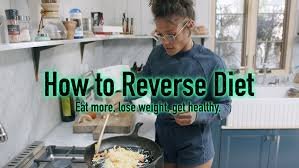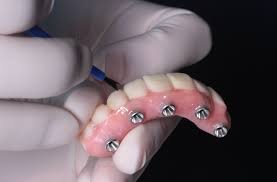
reverse diet
What Is Reverse Dieting?
Reverse dieting is a nutritional strategy used to gradually increase your caloric intake after a period of dieting or calorie restriction, with the goal of boosting metabolism, reducing fat gain, and restoring hormonal balance. It’s often used by bodybuilders, fitness competitors, and those recovering from long-term calorie deficits. The primary objective is to transition from a diet phase into a sustainable maintenance phase without rebounding into rapid fat gain, which is common when people abruptly return to pre-diet eating habits.
Why Do People Use Reverse Dieting?
After a fat-loss phase, your metabolism may have adapted to lower calories, meaning your resting metabolic rate (RMR) has dropped. This adaptation is called metabolic adaptation or adaptive thermogenesis, and it’s your body’s natural response to prolonged energy restriction.
People often use reverse dieting to:
- Prevent post-diet fat gain
- Restore metabolic health
- Increase caloric intake while maintaining current body composition
- Rebalance hunger hormones like leptin and ghrelin
- Improve workout performance and energy
- Transition into a sustainable lifestyle
It’s not just for competitors—anyone coming off a low-calorie diet can benefit from a structured reverse diet plan.
How Does Reverse Dieting Work?
Reverse dieting involves slowly increasing daily caloric intake, typically by 50 to 150 calories per week, until you reach your estimated maintenance calories (the amount of food required to maintain your current weight).
Here’s how it typically works:
- Determine Your Current Intake: Start by tracking your current calorie consumption using an app like MyFitnessPal for 7 days.
- Calculate Maintenance Calories: Use a TDEE calculator (Total Daily Energy Expenditure) to estimate how many calories you need to maintain your weight.
- Add Calories Gradually: Increase your intake by 2–5% per week, mainly through carbohydrates and fats, while keeping protein intake stable.
- Monitor Progress: Track body weight, measurements, photos, and energy levels weekly.
- Adjust Based on Response: If weight gain is rapid, slow down the increase. If weight is stable or energy remains low, you may need to increase more aggressively.
This gradual approach gives your metabolism time to adapt upward, allowing you to eat more without storing excess fat.
Benefits of Reverse Dieting
Reverse dieting offers both physiological and psychological benefits, especially for those who’ve been in a deficit for a long period.
1. Metabolic Recovery
Long-term dieting suppresses your thyroid function, hormones, and energy output. Reverse dieting helps restore:
- Resting metabolic rate (RMR)
- Non-exercise activity thermogenesis (NEAT)
- Total energy expenditure
2. Hormonal Balance
Hunger hormones like leptin (which signals fullness) and ghrelin (which signals hunger) are often disrupted by dieting. Reverse dieting helps normalize these levels, improving appetite control.
3. Sustainable Eating Habits
Reverse dieting supports a gradual shift to maintenance, helping you avoid the binge/restrict cycle that often follows crash dieting.
4. Better Performance and Mood
As calories increase, many people report:
- Improved gym performance
- Higher libido
- Better sleep
- Elevated mood and reduced brain fog
These are signs that your body is functioning optimally again.
Who Should Try Reverse Dieting?
Reverse dieting is ideal for people who:
- Have completed a fat loss phase
- Are eating low calories but not losing weight
- Have symptoms of metabolic slowdown (fatigue, hair loss, cold intolerance)
- Want to maintain their physique while increasing food intake
- Have history of yo-yo dieting or disordered eating patterns
It’s not recommended for individuals who are still in a caloric surplus, have medical conditions that restrict food intake, or are seeking rapid weight loss.
Sample Reverse Diet Plan
Here’s a basic example for someone finishing a fat loss diet at 1,400 calories:
| Week | Daily Calories | Macros (Protein/Fat/Carb) |
|---|---|---|
| 0 (starting) | 1,400 | 120g / 40g / 120g |
| Week 1 | 1,500 | 120g / 45g / 135g |
| Week 2 | 1,600 | 120g / 50g / 150g |
| Week 3 | 1,700 | 120g / 55g / 165g |
| Week 4 | 1,800 | 120g / 60g / 180g |
In this example:
- Protein remains constant to preserve lean muscle mass
- Fats and carbs increase slowly to boost energy and hormonal health
- Weekly weight and mood are tracked to guide the next increase
The goal is to eventually reach maintenance calories, which may be 2,000+ for active individuals.
How to Track Your Progress
To assess whether your reverse diet is working, monitor the following:
- Weight: Small fluctuations are normal, but consistent weekly increases may mean you’re adding fat too quickly
- Body measurements: Use a tape measure around the waist, hips, and arms weekly
- Photos: Front, side, and back photos taken in the same lighting can reveal body composition changes
- Energy levels and hunger: Improvements here indicate metabolic recovery
- Workout performance: Are your lifts increasing? Are you recovering better?
Use an app like Carbon Diet Coach or MacroFactor to automate adjustments and track trends.
Common Mistakes in Reverse Dieting
Even though reverse dieting sounds simple, several mistakes can derail your progress:
1. Increasing Calories Too Fast
Jumping too quickly to maintenance levels can cause unwanted fat gain, especially if your metabolism hasn’t caught up.
2. Not Tracking Accurately
Eyeballing portions or guessing can lead to overeating without realizing it. Use a digital kitchen scale and tracking app for precision.
3. Inconsistent Activity Levels
If your exercise or daily step count drops, you might gain fat faster—even if your calorie increase is modest. Keep movement consistent.
4. Giving Up Too Soon
Reverse dieting is a slow process. You might not see major changes in the first few weeks, but consistency is key.
Reverse Dieting vs. Recovery Dieting
While similar in concept, reverse dieting and recovery dieting differ in their approach and goals:
- Reverse Dieting: Slow, strategic increase in calories to avoid fat gain
- Recovery Dieting: Rapid return to maintenance (or above) to restore hormones and mental health, often used in cases of eating disorders or extreme restriction
Which is better depends on your history, goals, and physical condition. If your hormones are severely suppressed, a recovery diet may be more appropriate.
Psychological Impact of Reverse Dieting
For many, reverse dieting is as much a mental adjustment as it is a physical one. After months of eating in a deficit, adding more food—even healthy food—can create guilt or fear of gaining weight.
Tips to handle the mindset shift:
- Focus on performance, not just aesthetics
- Use objective tracking (photos, strength metrics, measurements)
- Practice self-compassion and understand that healing your metabolism is an act of care
- Work with a coach or registered dietitian if emotional eating or fear of food is a challenge
Reverse Dieting for Men vs. Women
The principles of reverse dieting are similar for both genders, but women may need to increase slower due to:
- Lower calorie needs
- More sensitivity to fat gain
- Hormonal fluctuations affecting appetite and metabolism
Still, both men and women can benefit equally from controlled metabolic restoration when executed properly.
Conclusion: Is Reverse Dieting Worth It?
If you’ve finished a fat loss phase and want to maintain your progress, restore your metabolism, and transition to a sustainable lifestyle, reverse dieting is a science-backed, practical method to achieve all three. While it requires patience, consistency, and tracking, the long-term benefits—such as eating more without gaining fat, improved performance, and a stronger metabolism—are worth the effort.
Rather than fearing the end of your diet, see it as the beginning of a smarter, healthier relationship with food. Reverse dieting gives you the freedom to fuel your life fully, without fear of regressing.






